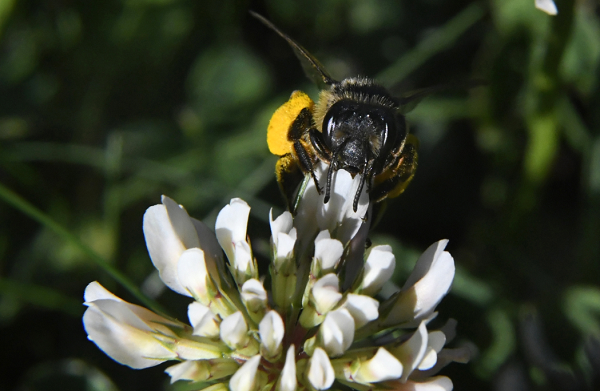
Just over a decade ago, beekeepers began reporting disturbing declines in honeybee populations. Bees, they said, were leaving the hive and not returning. The phenomenon, now known as colony collapse disorder, is alarming not only because of the central role bees play in plant life around the world—and thus most other life—but also because no one knew why the decline was happening or how to stop it. Several possible causes have since been identified, but that hasn't prevented the disappearances.
But new data give some reason for optimism. According to a report by the U.S. Department of Agriculture released Tuesday, honeybee populations are on the rise. As of April, an estimated 2.89 million bee colonies existed across the U.S., an increase of 3 percent compared to April 2016.
Colony collapse disorder makes sustaining a hive difficult. When worker bees abruptly leave, the queen bee is left with just a few nurse bees to raise the remaining immature larvae. Although the colony is left with ample food following the disappearance of the workers, the hive can't operate without their contribution, eventually leading to its death. Colony collapse disorder refers to the combination of events that lead to that destruction.
Several years ago, beekeepers began noticing diminishing numbers of colonies surviving the winter. Typically, hives that survived the winter months averaged at 28.7 percent. However, the number dropped 23.1 percent for the 2014-2015 winter and remained relatively low since.
But newly released figures from the USDA indicate a break in that trend. Only about 84 colonies were lost in first quarter of 2017. That figure is 27 percent less than the number of colonies reported lost for the first quarter of 2016.
But the news isn't completely rosy. Varrora mites, a parasite that lives inside beehives, are one of the many causes that researchers believe could be behind the losses. And the new report lists these mites as the top stressor responsible for lost colonies. The parasites, which survive by sucking insect blood, were reported in 42 percent of commercial bee hives. However, the department noted that instances of the varrora mites, which first started plaguing bee hives in 1987, were still down some 11 percent compared to the 53 percent of hives affected by the parasites the year before.
Although the report noted a slight decrease in varrora mites, beekeepers still expressed concern over controlling the parasites. The practice of beekeeping inevitably makes hives vulnerable, which puts them at risk of collapse.
"You create new hives by breaking up your stronger hives, which just makes them weaker," Tim May, a beekeeper in Harvard, Illinois, and the vice president of the American Beekeeping Federation, told Bloomberg News. "We check for mites, we keep our bees well-fed, we communicate with farmers so they don't spray pesticides when our hives are vulnerable. I don't know what else we can do."
Mites are far from the only suspect. Beekeepers, agriculture experts and environmental scientists have identified dozens of potential stressors and pathogens responsible for the loss, including pesticides. The EPA is currently reviewing neonicotinoids, a class of chemicals that includes a number of chemicals farmers spray on crops as a pesticide. The department is reportedly considering banning certain pesticides in areas where bees have been brought in to pollinate and repopulate.
Whether the slight uptick seen this past winter will continue is impossible to predict.
Uncommon Knowledge
Newsweek is committed to challenging conventional wisdom and finding connections in the search for common ground.
Newsweek is committed to challenging conventional wisdom and finding connections in the search for common ground.
About the writer
Michigan native, Janice Williams is a graduate of Oakland University where she studied journalism and communication. Upon relocating to New ... Read more
To read how Newsweek uses AI as a newsroom tool, Click here.






